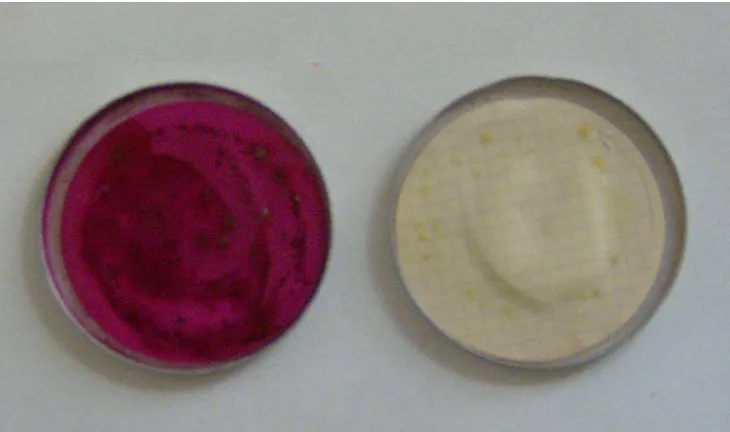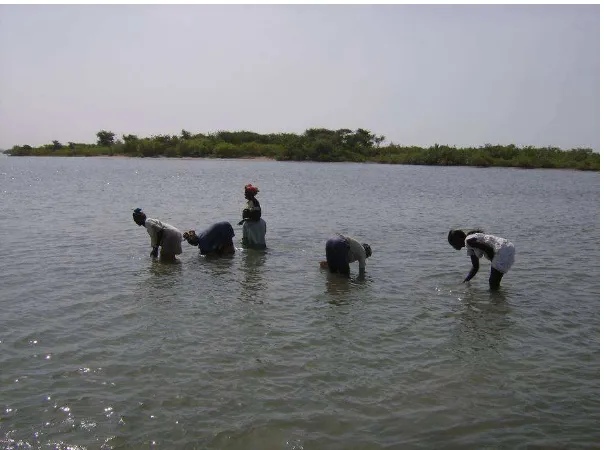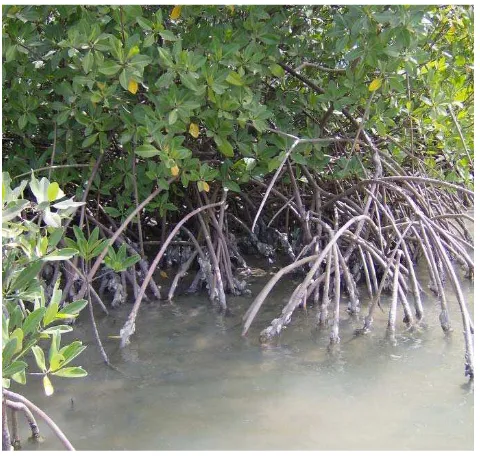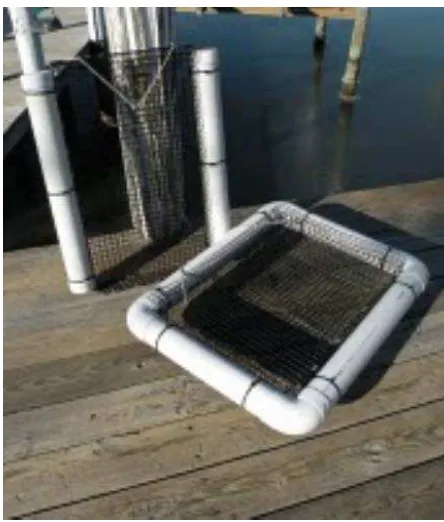Status Report on Bivalve Aquaculture and Water Quality
Activities
By:
Dr. Michael A. Rice
Gambia-Senegal Sustainable Fisheries Project
January, 2011
A partnership of:
United States Agency for International Development / West Africa Coastal Resources Center, University of Rhode Island
World Wide Fund, West Africa Regional Office Department of Fisheries
This publication is available electronically on the Coastal Resources Center’s website at http://www.crc.uri.edu. For more information contact: Coastal Resources Center, University of Rhode Island, Narragansett Bay Campus, South Ferry Road, Narragansett, Rhode Island 02882, USA. Tel: 401) 874-6224; Fax: 401) 789-4670; Email: info@crc.uri.edu
Citation: Rice, M.A. 2011. Status Report on Bivalve Aquaculture and Water Quality Activities.
Gambia-Senegal Sustainable Fisheries Project, Coastal Resources Center, University of Rhode Island. 12p.
Disclaimer: This report was made possible by the generous support of the American people
Table of Contents
Page
1. Introduction ... 1
2. Findings and recommendations regarding study of oyster spatfall ... 1
3. Findings and recommendations regarding sanitary water quality ... 2
4. Presentation to incoming U.S. Peace Corps Trainees on Appropriate Technology and Aquaculture in the Gambia... 6
5. Mini-workshop on condition index and spawning cycles of oysters and other bivalves... 6
6. Observations of the blood ark (Senelia senilis) fishery in the Kartong Estuary ... 7
7. Modifications of the Taylor Float nursery bag system for culturing of oyster seed in The Gambia .... 9
8. Recommendations concerning enactment of fishery product regulations mirroring the fisheries product regulations of the European Union... 10
9. References ... 11
List of Figures
Figure 1. Locations of oyster harvesting communities, water quality sampling sites and aquaculture monitoring sites in the Tanbi National Park--- 4Figure 2. Example of an experimental spat collector in the Tanbi Estuary --- 2
Figure 3. A pig pen within the intertidal zone of the Tanbi Estuary system --- 3
Figure 4. Pigs being raised within the intertidal zone at Old Jeswang--- 3
Figure 5. Fishing boats, Lamin Lodge Hotel and sailboat marina at Lamin Lodge site --- 4
Figure 6. Pit latrine at the Lamin Lodge site --- 4
Figure 7. Fecal Coliform (left) and Total Coliform (right) in waters from the Tanbi Estuary--- 5
Figure 8. Women of the Kartong village hand collecting blood ark clams --- 8
Figure 9. Kartong village woman using a basket to sift clam catch --- 8
Figure 10. West African mangrove oysters Crassostrea tulipa --- 9
1. Introduction
This report is based on a technical assistance trip undertaken by Dr. Michael A. Rice, Department of Fisheries Aquaculture and Veterinary Sciences, University of Rhode Island from January 3 to 13, 2011. The main trip objectives were:
• Assessment of the progress of the study of oyster spatfall intensity and timing at various locations in the Tanbi Estuary System
• Assessment of the progress of the studies of water quality in the Tanbi Estuary System
• Participate in pre-service training of incoming U.S. Peace Corps volunteers with presentation on appropriate technology and small-scale aquaculture.
• Conduct mini-workshop on method to determine condition index and water content of oyster meats and discuss the usefulness of the index measurement.
• Observe the fishery for Senilia senilis (blood ark) clams in the Kartong estuary of southwestern Gambia and provide recommendations for improving the fishery.
Additional objectives developed while in The Gambia:
• Modify “Taylor Float” nursery system for use in culturing Gambian oysters.
• Review fish and fishery product regulations for the European Union as a template for developing comparable regulations for The Gambia.
2. Findings and recommendations regarding study of oyster spatfall
Monthly data from spat collectors since June 2010 show the timing of the spatfall of oysters (Crassostrea tulipa)1 and the periodic and sequential appearance of fouling organisms that could
potentially serve as competitors for space and/or available food. For example, the appearance of solitary ascidians on the spat collectors during mid-June (Figure 1), if left unattended, would undoubtedly
interfere with spat settlement of oysters in subsequent months. Data show that spat settlement of oysters occurs every month; however there is a distinct maximum of spatfall in September and October as salinity in the estuary rises with the onset of the "dry" season in the country. Interestingly, the post-rainy season maximum for oyster recruitment is found elsewhere in many other populations of tropical
mangrove oysters. For instance, the period of maximum spatfall of closely related mangrove oysters
Crassostrea iredalei in northwestern Luzon Island in the Philippines is during the months of August and September, following June and July rains (see spatfall data in Rice, 2003).
It is recommended that this study of spatfall be continued to complete the full annual cycle. Additionally, it is recommended that samples of oysters be taken nearby to the spat collector sites for the purpose of determining a mean monthly condition index. See expanded discussion of oyster condition index in the section entitled “Mini-workshop on condition index and spawning cycles of oysters and other bivalves.”
1
Note: According to Lepegue et al. (2002), Crassostrea gasar (Dautzenberg, 1891) is synonymous with
3. Findings and recommendations regarding sanitary water quality
I reviewed the spreadsheets that contained data of water sampling from the various sites around the Tanbi Estuary system and provided comments to Mr. Fodeh as to interpretation of the results. In general both total coliform and fecal coliform counts were relatively low in all sample sites even during the rainy season. This is encouraging as these results are among the lowest counts I have encountered in tropical oyster growing grounds. For example in the Dagupan City estuary system in the Philippines, total and fecal coliform counts are routinely one or two orders of magnitude (10 to 100 times) higher than those we observed in the Tanbi Estuary sites. On the other hand, slightly elevated coliform counts were found at two locations in the estuary system at Old Jeswang at a location at which pigs are being raised in pens within the tidal zone (Figures 2 & 3), and at Lamin Lodge, the site of a hotel, boat marina, and fishing boat landing (Figures 4 & 5). On Friday January 7, I joined the team from the Department of Water Resources Water Quality Laboratory at Abuko on a sample collecting trip at two sites near the western approaches to the City of Banjul. Water samples were taken by wading out and opening up a sterilized collection bottle underwater. The water collection was done properly with care to avoid contamination and to transport water samples in a cooler with pre-frozen ice packs to keep samples cold while in transit to the laboratory. Samples were stored in the refrigerator at approximately 10oC until analyses were to be performed.
Figure 2. Example of an experimental spat collector in the Tanbi Estuary system in June 2010 fouled by solitary ascidians, possibly Mogula sp.
Figure 3. A pig pen within the intertidal zone of the Tanbi Estuary system at Old Jeswang, January 2011.
Figure 5. Fishing boats (foreground), Lamin Lodge Hotel (center left background) and sailboat marina (right background) at Lamin Lodge site January 2011.
Figure 6. . Pit latrine at the Lamin Lodge site located within 10 meters of mean high tide elevation.
Total and fecal coliforms were determined by use of the membrane filtration method, using standard TC and FC media (Figure 6). Coliform counts were done using 25 mL of filtrate and reported as colony counts per 100mL of sample as is routinely reported in shellfish sanitary water quality literature (eg. Graybow et al, 1981).
Figure 7. Fecal Coliform (left) and Total Coliform (right) in waters from the Tanbi Estuary using the membrane filtration technique and appropriate media.
The following are recommendations regarding the water sampling and sanitary water quality monitoring in the Tanbi Estuary system:
•
The water quality monitoring protocols in place since around June 2010 should be continued until there is a full year of data collected at each of the sites. My observation of the techniques and methods used in sample collection and analysis is that they are of adequately rigorous standards to provide high quality data There is a possibility that data will be publishable in a regional African journal dealing with water resources.•
The Departments of Fisheries and Water Resources should review the current (2007) National Shellfish Sanitation Program (NSSP) protocols as a model for the type of activities that would be consistent with internationally accepted standards for shellfish sanitation (see:http://www.issc.org/nssptoc.aspx). Included in the NSSP is model legislation for water quality, harvest and marketing of shellfish. It should be noted that data from the Tanbi sites appears to be reasonably clean in comparison to NSSP Total Coliform water sanitation standards
(http://www.issc.org/client_resources/2007%20nssp%20guide/section%20iv%20chap%20ii%20.01.pd f).
•
First-level regulations of shellfish growing water might include the simple closure of areas with obvious potential for fecal contamination. These regulatory closures might include prohibition of shellfish harvesting in areas in which animal husbandry is being carried out close to the shore such as within about 200 meters of the Old Jeswang site or at boat harbors or marinas such as those at Denton Bridge or Lamin Lodge. Shellfishing closures solely based upon risk assessment from shoreline surveys is consistent with NSSP protocolsis a simple first step that Gambian officials can undertake to assure public health. Migliore (1991) provides a brief summary of the shellfishing closure criteria and a map of shellfish closure areas in the State of Rhode Island.
•
Efforts should be undertaken to correct obvious sanitation problems identified in shore surveys such as moving animal production from close to the shoreline and assure that pit latrines are located at least 200m from the intertidal zone.4. Presentation to incoming U.S. Peace Corps Trainees on Appropriate Technology and Aquaculture in the Gambia
On the morning of Saturday, 8 January 2011, I gave a presentation to incoming Peace Corps trainees. The Powerpoint presentation to the PC-Trainees can be found at:
http://www.crc.uri.edu/download/Peace_Corps_Gambia_Aquacul_Pres_Rice_2011.pdf
5. Mini-workshop on condition index and spawning cycles of oysters and other bivalves
On Monday 10 January 2011, I conducted a mini-workshop on the method of determining condition index in oysters. Briefly, condition index is a measure of what extent the oyster or other bivalve meat fills its shell cavity. Since the ripe gonads of bivalve mollusks can comprise a relatively high percentage of the total soft tissues of mollusks, and that when bivalves filter feed and develop gonads they store energy reserves as relatively sweet-tasting glycogen, one sign that oysters may be ripening to spawn would be an increased condition index. Formally the condition index is expressed as:
CI = 1000 * [d / (w –s)]
when, d = dry weight of oyster soft tissue in g (dried 24 h at 70oC)
w = whole weight of oyster with trapped seawater in tightly closed shell and s = the weight of the shell (two valves shucked and meat free)
Condition index values typically range from about 60 to about 150 for oysters. Condition index values less than 75 indicate thin oysters that are out of condition and not ripe to spawn. Condition index values above 125 indicate very ripe oysters likely to have full gonads at or near spawning condition. Discussion of Condition Index can be found in Crosby and Gale (1990) and Rice (1998).
The concept of dry-weight/wet weight ratio of oyster meats was also discussed. For most bivalves, the dry:wet meat weight ratios should be about 20% or alternatively containing about 80% moisture. There are sometimes cases in which unscrupulous shellfish dealers will immerse oyster or other shellfish meats in fresh water to induce the meats to osmotically swell, thus artificially increasing their condition index and water weight. However, if this practice is suspected, it can be checked by
determining the dry:wet meat ratio. Ratios are substantially lower than 20%, may be an indication that freshwater osmotic treatment of the shellfish has occurred.
It is recommended that in parallel to spatfall studies in the Tanbi Estuary system, that a study the monthly average condition index of oysters in the estuary be conducted as a measure of spawning potential and period of greater and lesser meat condition affecting marketability. This can be done by reducing the number of sites in which spat collection data is carried out from nine to three, and then
collecting 10 oyster monthly samples per month per site parallel to the spatfall observations. In this way, possible correlations between oyster condition index and spatfall data can be made.
6. Observations of the blood ark (Senelia senilis) fishery in the Kartong Estuary
On Tuesday 11 January 2011, we traveled to the village of Kartong the most southwesterly village in The Gambia separated from Senegal to the south by the Kartong Estuary. We observed the traditional method of fishing by women of the village consisting of hand digging of clams by hand (Figure 7) and the use of baskets to clear the clams of adhering sand and to sift the catch of to be free of small juvenile clams (Figure 8). From discussion with the clam harvesters and from observation of the clam seed beds in the Kartong Estuary, it is clear that the Senilia senilis2 clams can set in very high abundance in localized seed beds to the point that although the clams are known to reach 6cm in shell length, the seed clams are prone to die before they reach 0.5 cm. This phenomenon of seed dying out due to competition for food resources is known to occur in Thailand and Malaysia in populations of the related species Anadara granosa (Tookwinas, 1983). Furthermore, clams are stunted in their growth at high densities (Broom, 1982). The abundance of Anadara seed in both peninsular Thailand and peninsular Malaysia along the Gulf of Thailand led to a very robust aquaculture industry based upon collection of seed from local seed beds and seeding the clams on to specially prepared aquaculture ploys in sand flats in the low intertidal and shallow subtidal zone (Broom, 1985).
It is recommended that PCV Casey Donohue who is assigned to Kartong in cooperation with the women shellfish harvesters explore the feasibility of Senilia culture by selecting an experimental culture location that is low in the intertidal zone with easy shore access. The experimental plot might be 10 meters wide by about 20 meters long and seeded at an initial stocking density of 100-200 seed clams per square meter (see Figure 4 in Broom 1982). The experimental plot should be raked free of clams and resident predators and marked on its edges by an identifiable marker (large rock, poles, etc.). Based on the A. granosa data, the clams should be harvestable in 9 months to a year (See Figure 2 in Broom 1982). It should be noted that data suggest that Senilia senilis are approximately 20mm when they are ripe enough for first
2
Figure 8. Women of the Kartong village hand collecting blood ark clams (Anadara senilis) from the Kartong Estuary.
Figure 9. Kartong village woman using a basket to sift clam catch to clean sand from clams and return smallest seed clams to the estuary bottom.
spawning (Yankson, 1982). This observation implies that any harvesting of this species should be restricted to individuals in excess of about 25mm to allow reproduction to occur. The current size of the sieve in the bottom of the baskets suggests it allows for juvenile cockles to be harvested (e.g. smaller than the average size of maturity of 20mm). It is recommended that the size of the sieves in the baskets be modified so that cockles less than 25mm length fall through and are not collected. The rationale for this change in relation to the biology of the cockles will need to be explained to harvesters and they should all agree to make this change or this harvesting rule will not achieve improved and sustainable harvesting practices., Ideally, formalizing this rule through endorsement by the local Alcalo is recommended.
7. Modifications of the Taylor Float nursery bag system for culturing of oyster seed in The Gambia
The women harvesters of oysters in the Tanbi Estuary system typically work early in the season at most accessible sites closer to their homes to collect oysters from mangrove prop roots (Figure 9). As the harvest season progresses, they venture farther a field and deeper into the mangrove forest in search of larger marketable oysters as the season progresses. One of the by-catch items of the harvesting process are smaller non-marketable seed oyster that are simply culled and discarded. Application of some simple oyster nursery techniques to hold the oyster seed until they can grow to larger marketable sizes may be a means to reduce this by-catch in the oyster fishery and provide the women a convenient opportunity for the women to be learning a simple aquaculture technique to grow and eventually sell the discarded seed oysters.
Figure 10. West African mangrove oysters Crassostrea tulipa setting intertidallyon the prop roots of the Atlantic red mangrove, Rhizophora racemosa.
Taylor floats (Figure 10) were originally designed by Jake Taylor at the Virginia Institute of Marine Sciences Laboratory at Gloucester Point, Virginia, USA. Floats are constructed of plastic mesh or wire-coated mesh material with floatation provided by capped PVC piping (See:
Gambia, including vinyl-coated wire mesh material of various mesh sizes, PVC pipes and end caps, as well as nylon cable ties (aka “zipties”) were found at hardware supply and automotive supply houses in the Metropolitan Banjul area. It is suggested that a pilot study involving women oyster harvesters to culture oyster seed using to test the technical and economic feasibility of Taylor floats as an adjunct practice to the oyster fishery of the Tanbi. This pilot can be piloted in only one of the nine spatfall monitoring sites that can be easily reached by local harvesters and extension staff. Floats should include several size mesh – small, medium, large mesh – so that as the oysters grow, they can be transferred to progressively larger mesh cages that allow better water circulation.
Figure 11. Examples of Taylor float designs used by the Chesapeake Bay Oyster Farm in Virginia, USA. Oyster seed is held near the water surface, and fouling on the apparatus is controlled by periodically flipping the floats in order to expose any adhering fouling organisms to air and sunlight.
8. Recommendations concerning enactment of fishery product regulations mirroring the fisheries product regulations of the European Union
On my first visit to the Department of Fisheries on 6 January 2011, I was asked to review the proposed fishery product regulations for the Gambia and provide feedback on the approximately 250 pages of proposed fishery product regulations mirroring the regulations currently used by the European Union (EU). This is a major issue in that there is a desire to develop export markets for Gambian fishery products in Europe. At issue is the requirement that contries exporting to the EU must have fishery product safety regulation on par with those of the EU if that country wishes to ship and sell product in the EU, at least for the products that enter the European markets. (See the following discussion of
requirements for African Countries in complying with EU regulations:
http://www.iafi.net/WC2009/Presentations/Workshop%20pdf/Africa%20Network/Amadiu%20Tall%20C
OMPLYING%20WITH%20EU%20MARKET%20REQUIREMENTS_%2003%20_%2009%20_%2009. pdf )
The proposed Gambian fishery product safety regulations are based upon a Hazard Analysis and Critical Control Point (HACCP) procedure used in the EU and cover food safety issues from point of harvest in the wild, handing and transport on the boats, landing, processing, freezing, and shipping. A whole suite of pathogenic, toxic and other hazards are identified in the HACCP guidance document and regulations. I provided a thorough review of the proposed regulations removing mention of fish species not found in The Gambia and inserting the names of locally found fish (See:
http://www.fishbase.us/Country/CountryChecklist.php?c_code=270&vhabitat=all2&csub_code=
The proposed regulations are comprehensive and comparable to regulations enacted by the EU. However, if these regulations are to be enacted by the Gambian Government, it is recommended that considerable attention by the Ministry of Fisheries, Water Resources and National Assembly Affairs to their implementation. This includes strict attention to the mechanism by which these stringent HACCP procedures are to be developed by Gambian fish exporters and to the mechanism by which proper monitoring and oversight is carried out by the Competent Authority in The Gambia.
9. References
Abbott, R.T. and S.P. Dance. (1982). Compendium of Seashells: A Color Guide to More Than 4,200 of the World’s Marine Shells. E.P. Dutton, Inc., New York. 411pp. ISBN 0-525-93269-0
Broom, M.J. (1982) Analysis of the growth of Anadara granosa (Bivalvia: Arcidae) in natural and artificially seeded and experimental populations. Marine Ecology Progress Series 9:69-79. Broom, M.J. (1985). The Biology and Culture of Marine Bivalve Molluscs of the Genus Anadara.
ICLARM Studies and Reviews 12, International Center for Living Aquatic Resources Management, Makati, Philippines. 37pp.
Crosby, M.P. and L.D. Gale (1990). A review and evaluation of bivalve condition index methodologies with a suggested standard method. Journal of Shellfish Research 9:233-237.
Graybow, W.O.K., C.A. Hilner, and P. Coubrough. (1981). Evaluation of standard and modified M-FC, MacConkey, and Teepol media for membrane filtration counting of fecal coliforms in water.
Applied and Environmental Microbiology 42(2):192–199.
Lapègue, S., I. Boutet , A. Leitão, S. Heurtebise, P. Garcia, C. Thiriot-Quiévreux and P. Boudry. (2002). Trans-Atlantic distribution of a mangrove oyster species revealed by 16S mtDNA and
karyological analyses. Biological Bulletin 202: 232-242.
Migliore, J. (1991). Regulatory requirements of shellfish-growing areas. Pp. 59-63. In: M.A. Rice, M. Grady and M.L. Schwartz, Proceedings of the First Rhode Island Shellfisheries Conference: University of Rhode Island, 27 August 1990. Rhode Island Sea Grant, Narragansett.
Rice, M.A. (1998). Laboratory 8: Bivalve morphometrics. Pp. 55-62. In. M.A. Rice, Laboratory Manual of Shellfish Aquaculture. Special Publication No. 2 in Fisheries and Aquaculture, Department of Fisheries, Animal & Veterinary Science, University of Rhode Island, Kingston. 69pp.
Tookwinas, S. - 1983. Commercial cockle farming in southern Thailand. ICLARM Translations 7, 13 p.. Translated by E.W. McCoy. (ISSN 0115-4141, ISBN 971-1022-20-6).
Yankson, K. (1982).







